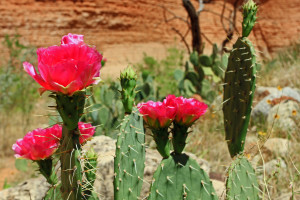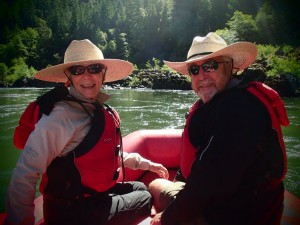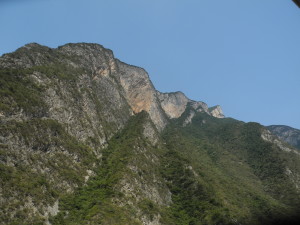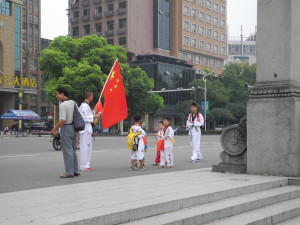Watching the new Star Wars movie — The Force Awakens — the other night, I was startled, and pleased, to see one of my favorite places in the world as the setting for the dramatic last scene.
(I won’t spoil the ending for those who haven’t see the film, but I can recommend the movie to any baby boomers who liked the initial trilogy, called Episodes IV to VI. Several of the old stars have returned, and the plot, characters, and general feel are much like a combination of the first three in the series.)
The place setting for the last scene is the spectacularly beautiful rocky island Skellig Michael (also known as Great Skellig), which lies about seven miles off the coast of southwest Ireland.
I visited there about 12 years ago on a… Continue reading
I hope you’re all having a wonderful holiday season.
Mine has been truly memorable, as our family welcomed its newest member and my first grandchild into the world at 6:33 a.m. on December 26 in Tucson, Arizona. Baby, parents, and grandparents are all doing fine…who needs sleep when the greatest Christmas gift of all arrives early the following morning?
Perhaps needless to say, we’re already plotting our first big trip with the newborn; I’ll keep you posted! (Multi-generational travel is one of the big trends in baby boomer travel, and we intend to do our share.)
Now for the answers to our first annual Merry Christmas Travel Quiz. In case you missed the earlier post and would like to take the quiz, I’m listing the answers at the bottom.
1. Christmas Island was discovered by British Royal Navy Captain… Continue reading
Christmas is a popular time to travel, especially for baby boomers escaping cold weather (those who live up north) and/or taking advantage of their empty nests (if applicable). And if you have grandkids you don’t want to part with at Christmastime, you can always take them with you!
One option is to put together a Christmas-themed vacation. But how much do you really know about where to find Santa Claus, reindeer herds, unique Christmas trees, an It’s a Wonderful Life festival, or an island named Christmas?
Take our quiz to find out (answers coming in my next post; try to resist googling or risk finding lumps of coal in your stocking).
1. Christmas Island was discovered by British Royal Navy Captain William Mynors on December 25, 1643, hence the name. Which ocean would you travel to to spend… Continue reading
In the spirit of the holiday season — and getting into shape after indulging in all those holiday parties — I’m running a guest post from my fellow Tucson, Arizona, resident Mitch Stevens, founder of Southwest Discoveries.
Mitch or one of his trained guides at Southwest Discoveries will take you on a personalized hiking tour in the Tucson region or around Arizona, including the Grand Canyon and Sonoran Desert. His market is primarily baby boomers and multi-generational hiking groups, which is how Mitch and I originally connected.
Appropriately, Mitch writes about the benefits of going hiking (which I can now do in the winter, having recently relocated from upstate New York to sunny Tucson — following in the footsteps, as it were, of countless other baby boomers heading south and west).
So I’ll hand… Continue reading
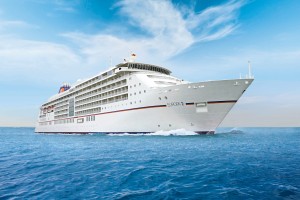
Luxury cruise travel — such as on Hapag-Lloyd’s Europa 2 — is one favorite of senior travelers. Photo by Clark Norton.
In my last post, I recommended a piece by Anita Mendiratta of the CNN Task Force contending that the world’s seniors (those aged 60 and up) are “global tourism’s silver lining.”
Based on world tourism and economic statistics, Mendiratta notes that senior travelers have more disposable income than other age groups, have more flexibility as to when to travel, and tend to stay longer on the trips they make.
But I thought her own observations about how seniors bring a special sense of excitement and awe to travel was especially insightful.
Baby boomers (now in their 50s and 60s) have a lifetime of experience and knowledge to bring to their travels, and I think this results in greater appreciation for — and excitement about — the places… Continue reading
I don’t usually use the word “seniors” when I’m referring to baby boomers — “seniors” somehow always seem older than us — but there’s a very insightful piece written by Anita Mendiratta of the CNN Task Force promoting the world’s seniors (those aged 60 and up) as “global tourism’s silver lining.”
Mendiratta praises senior travelers as “one of the most strategically valuable, yet socially undervalued, segments of the global travel population.”
The piece, which was syndicated by e Turbo News, touches a lot of bases that I’ve blogged about over the past 2 1/2 years, and has added a few new wrinkles (if you’ll excuse the expression) as well.
Her key premise is that older travelers should not be forgotten as the tourism industry actively courts millennials and other younger age groups. “To the traveling… Continue reading
Sixth in a Series:

A Chinese symbol inside the Red Pagoda — if you rub it, it’s said to bring good fortune. Photo by Clark Norton.
Like all rivers, China’s Yangtze is constantly changing, though in this case humans have produced the most profound recent changes rather than nature.
The huge Three Gorges Dam project has resulted in the water level rising more than 100 to 300 feet, depending on the location and the season, along a particularly scenic stretch of the river known as the Three Gorges. The gorges, while not as dramatically steep as the pre-dam versions, are still scenic and still well worth seeing, as my wife, Catharine, and I discovered on a recent Yangtze cruise with Victoria Cruises.
The rising waters have even opened up new scenery to explore: one excursion from our ship, the Victoria Katarina, took us on a ferry ride down the… Continue reading
Fifth in a Series:
The Three Gorges Dam along China’s Yangtze is a marvel of engineering — it’s the world’s largest power station ranked by energy generation, providing hydroelectric power for millions of people — and a disaster for the 1.4 million Chinese who had to be relocated when the dam flooded the Yangtze in the late 1990’s and early 2000’s.
Some 1,500 villages, towns and cities were flooded and now lie beneath or partially beneath the river, as the water levels rose some 300 feet along the scenic Three Gorges, where steep mountains line both sides of the Yangtze.
Most former residents, many of them farmers, have been relocated to cities like Chongqing — which now has a startling population of 33 million — or to special “relocation cities,” where the river dwellers have been moved into new… Continue reading
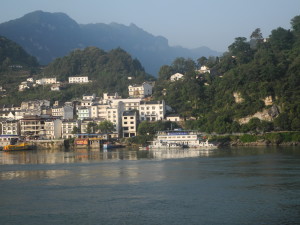
The Xiling Gorge, one of the Yangtze’s famous Three Gorges, begins near Yichang. Photo by Catharine Norton.
Fourth in a Series:
There are a number of iconic river cruises in the world — the Rhine, the Danube, the Amazon, and the Nile among them — and China’s Yangtze must be added to the group.
It’s China’s longest river and third longest in the world after the Nile and Amazon. “Yangtze,” in fact, means “long river” in Chinese. Also known as the “Golden Highway,” the Yangtze is the busiest river in the world and more than one-third of China’s 1.4 billion population live along it.
The Yangtze is actually divided into seven separate sections, but the part that most people cruise — and certainly the most scenic — is the 400-mile-long “Three Gorges” section between the cities of Yichang and Chongqing, a sprawling metropolis in southwest China.
My wife, Catharine, and… Continue reading
Third in a Series:
To cruise the Yangtze, first you have to find the ship. In our case, it was the Victoria Katarina, one of a fleet of excellent ships that U.S.-based Victoria Cruises runs on China’s longest river.
Finding the ship sounds elementary, but when you’re traveling independently in China and don’t speak Chinese, it adds an extra element to the equation.
First, some background: It seems most people take the three-night, four-day cruise down the Yangtze to see the famous Three Gorges and the Three Gorges Dam, which flooded this region of the river when it was finished in 2003, displacing 1.4 million people and making the Three Gorges somewhat less steep and scenic than previously. Note: they’re still very scenic.
That downriver cruise embarks in the city of Chongqing and disembarks in the… Continue reading



